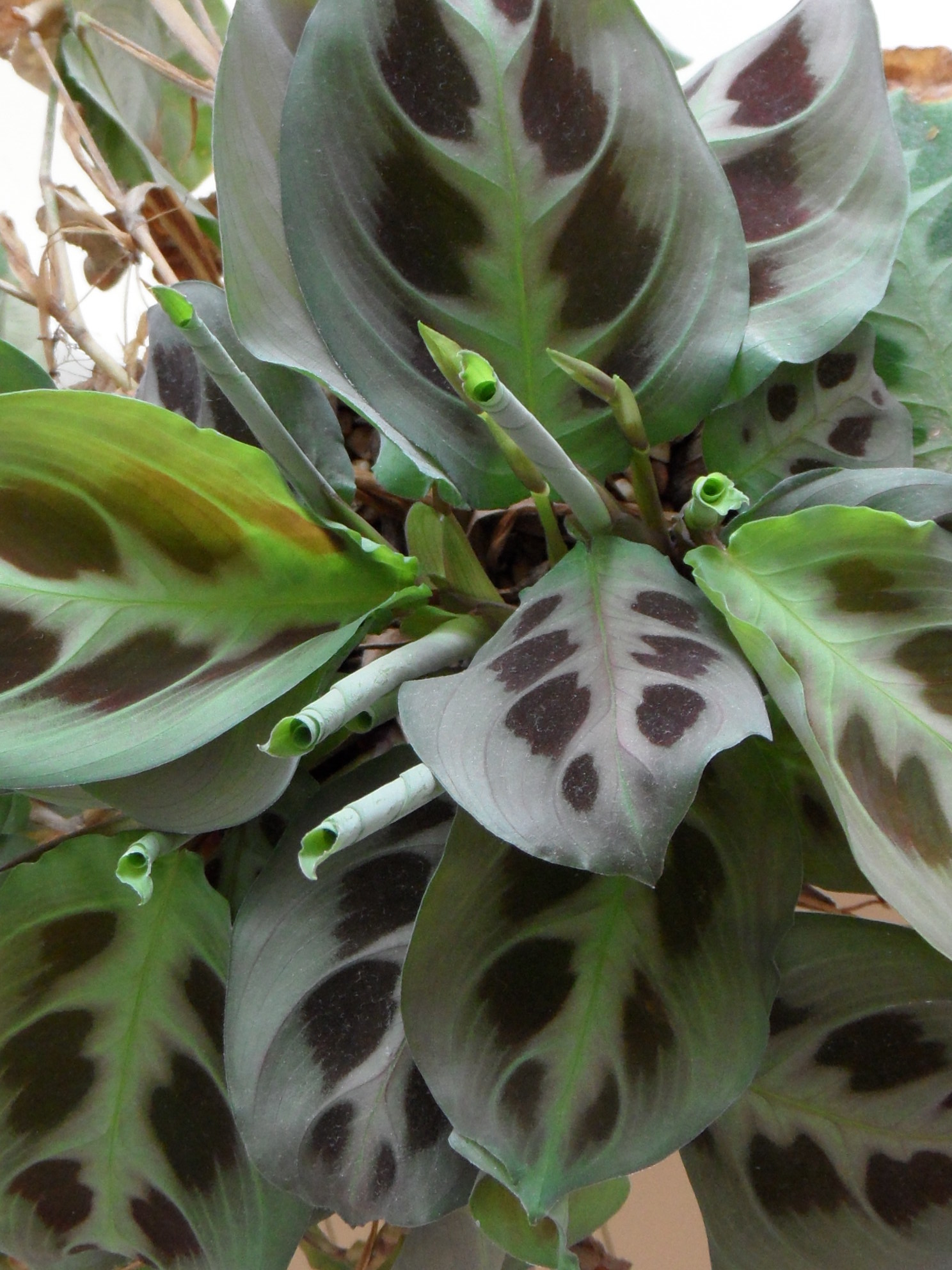
Rhizomatous perennial herbs. Leaves distichous, often with an open, winged sheath, an unwinged stalk and variegated blade which has a swollen articulation (pulvinus) where it joins with the stalk; midrib prominent. Flower clusters in a head, spike or branched. Flowers bisexual, irregular, 3-parted. Sepals 3. Petals 3 with basal tube, usually white with 1 petal often hooded and larger than the others. Stamen 1 functional, petaloid with 3-4 additional sterile petaloid stamens. Ovary inferior, mostly 3-chambered (occasionally 1-chambered with 2 aborted). Fruit a capsule or berry.
Mostly highly ornamental tropical plants with variously patterned leaves grown indoors as pot and tub subjects.
Division.
Maranta and Myrosma are both food plants known as Arrowroot.
Tropical plants grown as indoor pot plants in cool areas; leaves often patterned and variegated, the stalk with a swollen band or articulation at the junction with the blade; fertile stamen petal-like (at least in part); ovary with 1-3 ovules.
29 genera and 535 species pan tropical with a centre of distribution in the Americas and absent from Australia.
Andersson (1986), Kennedy (1988).
Source: (2005). Marantaceae. In: . Horticultural Flora of South-eastern Australia. Volume 5. Flowering plants. Monocotyledons. The identification of garden and cultivated plants. University of New South Wales Press.
